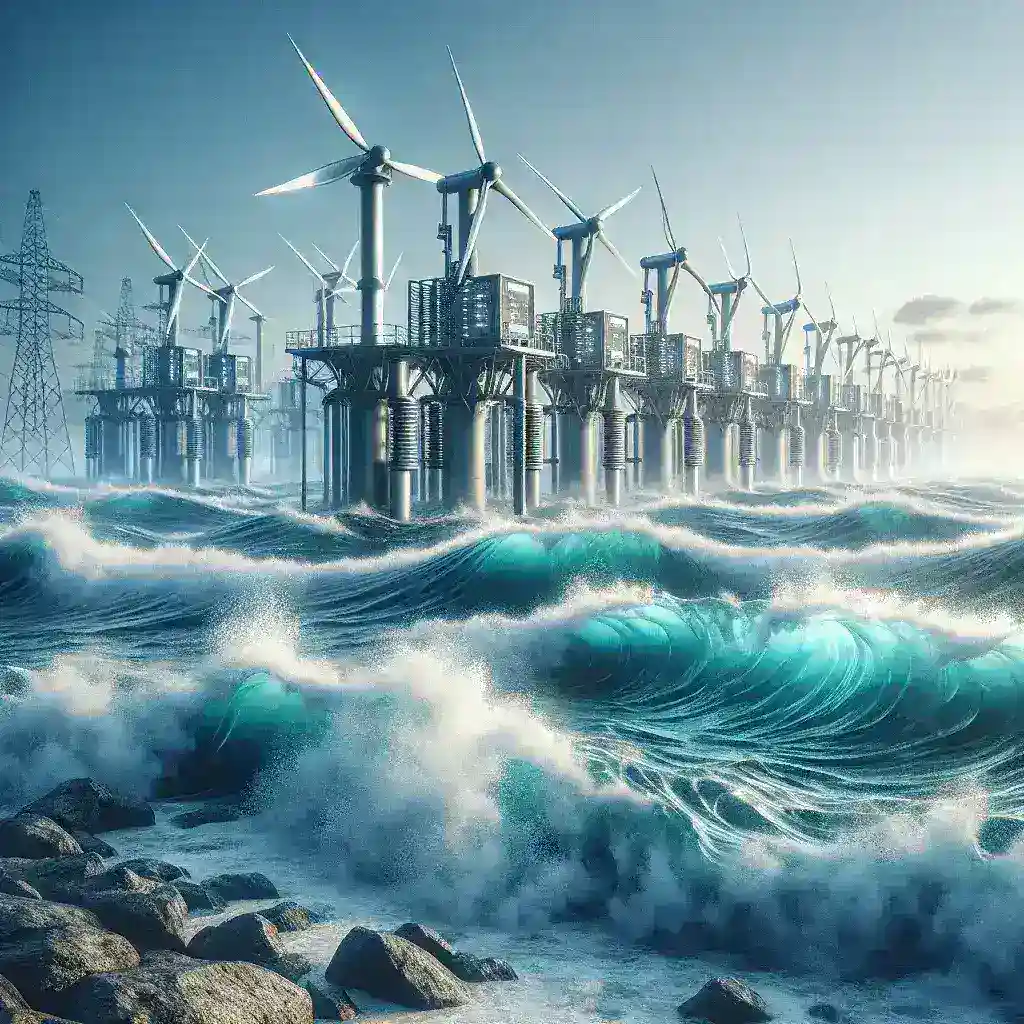
Wave Energy Converters Generate Electricity from Ocean Motion
Introduction to Wave Energy
Wave energy is a renewable energy source that captures the energy of ocean waves and converts it into electricity. As the demand for clean and sustainable energy continues to rise, wave energy converters (WECs) are gaining attention for their potential to provide a consistent and reliable power supply. This article delves into the mechanics of wave energy converters, their historical context, advantages, challenges, and predictions for the future.
How Wave Energy Converters Work
Wave energy converters operate by harnessing the motion of the ocean’s surface waves. These devices can be categorized into various designs and mechanisms, but they all share a common goal: converting kinetic energy from waves into electrical energy. Below are the primary types of wave energy converters:
- Point Absorbers: Floating buoys that move with waves, converting oscillatory motion into hydraulic or mechanical energy.
- Oscillating Water Columns (OWCs): Structures that capture air pressure changes caused by wave motion to drive turbines.
- Overtopping Devices: Systems that collect water from waves and use it to generate hydroelectric power.
- Attenuators: Long floating structures that flex at the joints as waves pass, converting motion into energy.
The Mechanics Behind WECs
The conversion process begins with the wave’s kinetic energy, which is transformed into mechanical energy as the WEC moves with the wave motion. This mechanical energy is then converted into electrical energy using generators. The efficiency of this conversion depends on the design of the WEC and its ability to withstand harsh marine environments.
A Brief History of Wave Energy Development
The concept of harnessing wave energy dates back to the late 18th century when scientists and inventors began experimenting with various designs. However, commercial development of wave energy technology began in earnest in the late 20th century. In the 1970s, the energy crisis prompted increased interest in renewable energy sources, leading to government-funded research and the first prototypes of wave energy converters.
Significant Milestones
The following milestones mark significant advancements in wave energy technology:
- 1974: The first wave energy device, the Pelamis, was tested off the coast of Portugal.
- 2000: The establishment of the European Marine Energy Centre (EMEC) in Orkney, Scotland, to support the development of marine energy technologies.
- 2015: The first commercial-scale WEC, the CETO, was deployed in Australia.
- 2020: The development of advanced materials and technology led to more efficient and robust wave energy converters.
Advantages of Wave Energy Converters
Wave energy offers numerous benefits in the context of sustainable energy. Some of the key advantages of WECs include:
- Renewable and Sustainable: Wave energy is inexhaustible and will continue as long as the sun shines and the wind blows.
- High Energy Density: Ocean waves contain much more energy than solar or wind, making wave energy an efficient alternative.
- Predictable Energy Source: Unlike solar and wind, wave patterns can be forecasted, providing a reliable energy supply.
- Reduced Carbon Footprint: Utilizing wave energy can significantly decrease greenhouse gas emissions, contributing to climate change mitigation.
Environmental Impact
As with any energy generation technology, WECs have environmental implications. However, research shows that the impact of wave energy converters is relatively low compared to fossil fuels. They can even enhance marine habitats if designed thoughtfully. Environmental assessments are essential to minimize potential disruptions.
Challenges Facing Wave Energy Converters
Despite their advantages, wave energy converters face several challenges that hinder widespread adoption:
- High Initial Costs: The setup cost for wave energy technology is significant, limiting investment in the sector.
- Durability Concerns: WECs must withstand harsh marine conditions, leading to maintenance and repair issues.
- Limited Infrastructure: The current energy grid must adapt to accommodate wave energy, which requires significant investment in infrastructure.
- Regulatory Hurdles: Navigating regulatory frameworks can be complex and may delay project approval.
Technological Innovations
Innovation is key to overcoming the challenges faced by wave energy converters. Ongoing research focuses on developing more robust materials, improving energy conversion efficiency, and reducing installation and maintenance costs. For instance, advanced composites and smart sensors are being tested to enhance the performance and lifecycle of WECs.
Future Predictions for Wave Energy
The future of wave energy is promising. According to recent studies, wave energy could supply up to 10% of the world’s electricity needs by 2050. The global push for renewable energy and technological advancements will likely drive investments in wave energy projects.
Government Support and Policy Changes
Many governments recognize the potential of wave energy and are implementing policies to support its development. Incentives, grants, and subsidies are being introduced to encourage private sector investment in wave energy projects. This support will be crucial for the sector’s growth.
Real-World Examples of Wave Energy Projects
Several countries have already begun harnessing wave energy, showcasing the technology’s potential:
- Scotland: The Pelamis Wave Energy Converter has been deployed, demonstrating the feasibility of commercial wave energy.
- Australia: The CETO system is a pioneering wave energy converter that generates electricity and desalinated water.
- Portugal: The Aguçadoura Wave Farm was the first grid-connected wave energy project, providing valuable insights into the technology’s performance.
Conclusion
Wave energy converters represent a promising avenue for sustainable energy generation. While challenges remain, ongoing research and technological advancements are paving the way for a brighter future. As we continue to explore the depths of our oceans, wave energy has the potential to play a significant role in the global transition to renewable energy sources. By tapping into the power of ocean motion, we can create a cleaner, more sustainable energy landscape for future generations.

